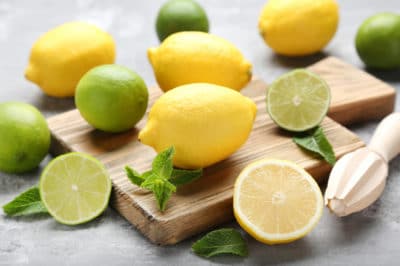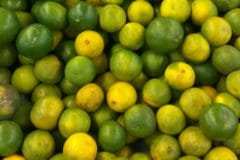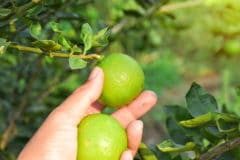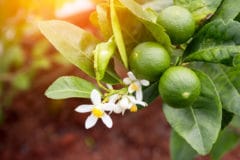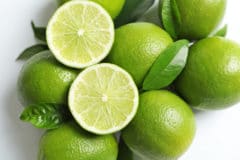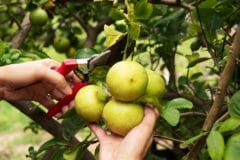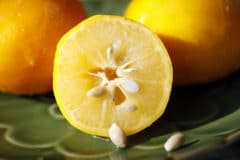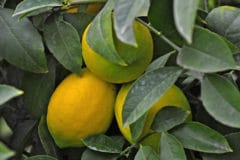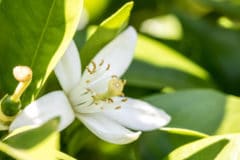If Green Limes Aren’t Ripe, Why Are They Sold That Way?
Commercial growers harvest limes green because they ship and store best that way. But more importantly, the citric acid responsible for their flavor peaks before they ripen. With a citric-acid content of up to 8 percent (lemons weigh in with up to 5 percent citric acid), limes easily win the citrus fruit tartness title.
Persian Limes
Prized for the punch they add to salad dressings, cocktails and salsas, green Persian limes (Citrus latifolia, USDA hardiness zones 10 and 11) are loaded with acidic juice but become blander as they ripen.
Sweet Limes
Depending on who’s doing the tasting, ripe sweet limes (Citrus limettoides, USDA zones 9 through 11) are a low-acidity hybrid variously described as bitter, bland or tangy-sweet. To complicate matters, sweet limes may stay green permanently.
Expert gardener’s tip: Because ripe Key limes (Citrus aurantifolia, USDA zones 10 and 11) keep their signature acidity and flavor, they’re often marketed when slightly yellow. Their golf ball shape distinguishes them from lemons.
Do Yellow Lemons Keep Their Flavor?
Lemons also become less acidic as they ripen, with deep-yellow ones having the “sweetest” taste. To get the best flavor for your lemon-purchasing buck, look for fruit with:
- A thin, pliable and finely textured rind.
- Weight that’s heavy for its size. This indicates high juice content.
- A firm feel, with no bruising, hard spots or shriveling.
A Look at the Lemon-Lime Relationship
People have been cultivating citrus fruit for thousands of years, but for most of that time the origins of limes, lemons and other hybrids has been a mystery. That changed in 2011, when Chinese researchers traced the DNA of cultivated citrus hybrids back to their beginnings. Their findings?
- Key limes are the offspring of two wild tropical Asian citrus species, micranthas (Citrus micrantha) and citrons (Citrus medica). Micranthas were their female ancestors, and citrons their male ones.
- Lemons (Citrus limon) descend from male citrons and female sour oranges(Citrus aurantium). Sour oranges are themselves hybrids, so lemons also contain DNA from pomelos (Citrus maxima) and mandarin oranges (Citrus reticulata) on their “mother’s” side.
- As Key lime/lemon hybrids, Persian limes inherit the DNA of four citrus species: citrons, micranthas, pomelos and mandarin oranges.
The Citron Connection
What traits have modern lemons and limes received from their only common ancestor, the citron?
- Citron fruit grows on small trees or shrubs reaching 8 to 15 feet high. Like Key limes and many lemon trees, their branches are lined with stiff thorns.
- Citron trees produce flowers and fruit all year long. Key and Persian limes and ‘Eureka,’ ‘Ponderosa’ and ‘Meyer’ lemon cultivars are also everbearing.
- Citron fruit starts out bright green and ripens to yellow-orange.
- Citron, lime and lemon trees all have glossy, aromatic evergreen leaves. Kaffir lime and lemon leaves are often used to flavor grilled meats.
So, while green limes aren’t unripe lemons, the two fruits share many characteristics with each other and with an ancient, wild ancestor.
